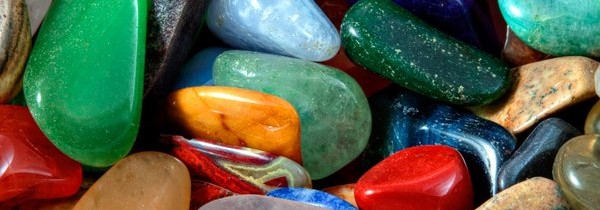Coloration of Minerals by Bob Jackson
In one of the many ongoing discourses, agreed-on primary distinguished physical characteristic of minerals are color, hardness, density (specific gravity), fracture/cleavage, chemical composition and morphology (crystal structure).
There are additional physical attributes, of varying degrees of subtlety, which occasionally attract attention depending on availability of, and accessibility to expensive instrumentation (to the person who possesses a hammer, everything appears to be nails). We will briefly look into coloration, having previously considered hardness.
Color in minerals is primarily caused by:
- principal cation constituents or
- by trace cationic impurities (cation means positively charged ion) or
- crystal structures distortion (e.g. smokey quartz)
Absence of color is caused, more usually, by structural factors. Color is rarely, if ever, sufficient information to identify a mineral. Color’s utility stems chiefly from three observations: perceived color, lustre ( a kind of color quality) and streak (powder).
The cation most likely to produce colors are in the transition element series. Consequently, it gets quite confusing since these elements tend to have multiple positive valance states ( frequently in the same specimen). Also, these elements tend to form complexes, which may behave as either cations or anions.
- Chromium – blue-green (beryl etc.), yellow (chromate)
- Cobalt – pinks (Chobaltocalcite), blue
- Copper – black/brown, blue (azurite), green (malachite), red (cuprites)
- Iron – (you name it!) – yellow, green, brown, red, black, blue
- Manganese- black, brown, red, purple
- Nickel – yellowish-green, green
- Silver- blackish (various oxides)
- Sulfur – yellow, blue (!)
- Titanium – blue, iridescence
- Uranium – vivid greens and yellows
- Vanadium – blue-green, orange/red
To further confuse things, the above are such strong coloring agents that simply including traces of one or more in a mineral which characteristically is colorless, produces a colorful appearance (amethyst, for example).
Individuals generally perceive color somewhat differently, although the variations between individuals are small enough to allow dialogue (hence, beauty may be in the eye of the beholder, but most beholders will agree) . Fortunately, we have enough variation to allow a degree of flexibility in those activities involving different colors in combination ( chakras, rainbows, etc.)
Reprint from The TAOMCHI newsletter June 2003


